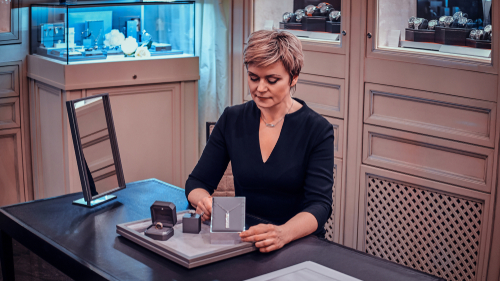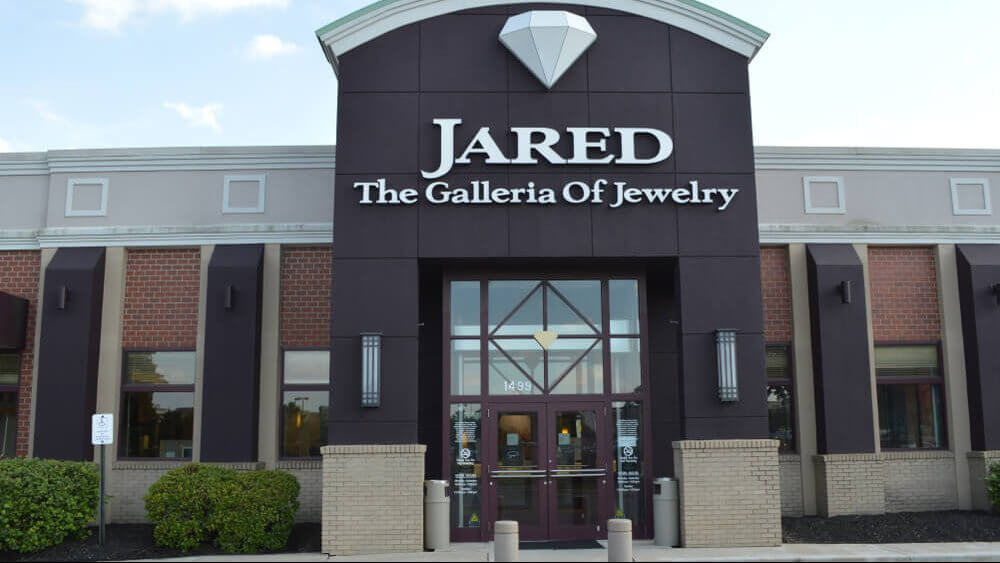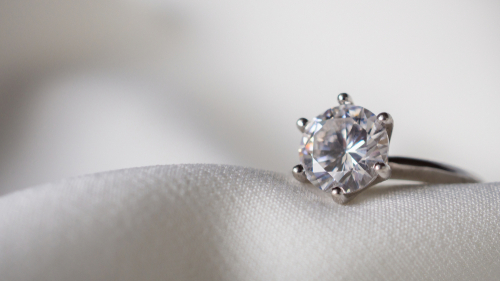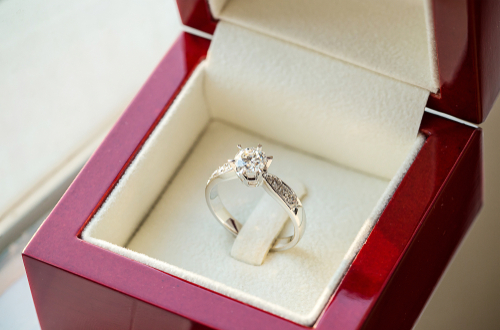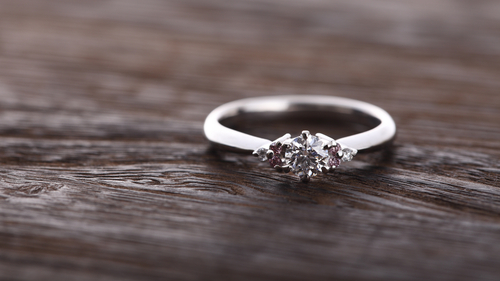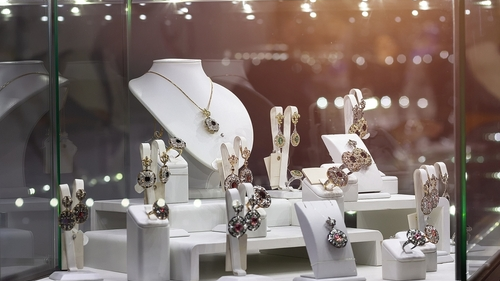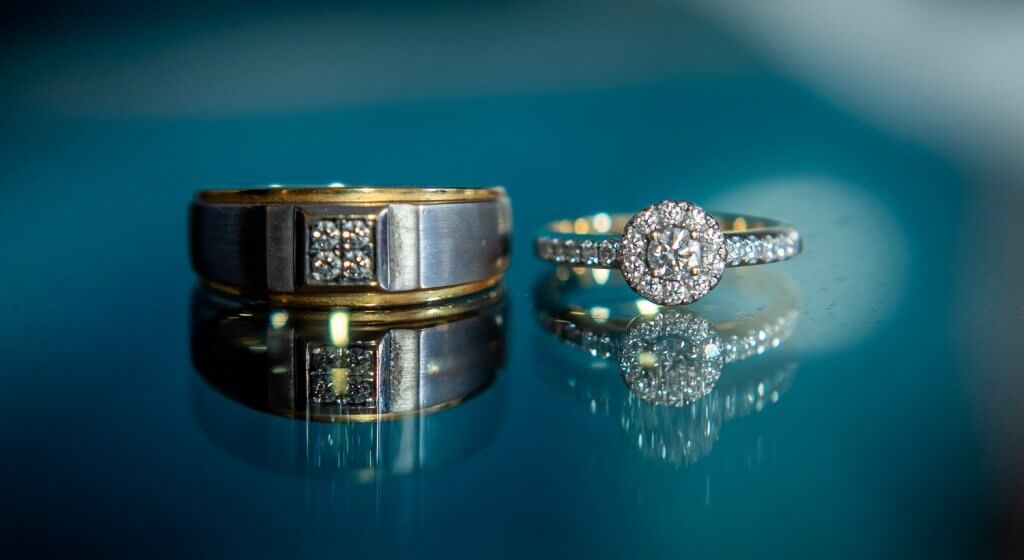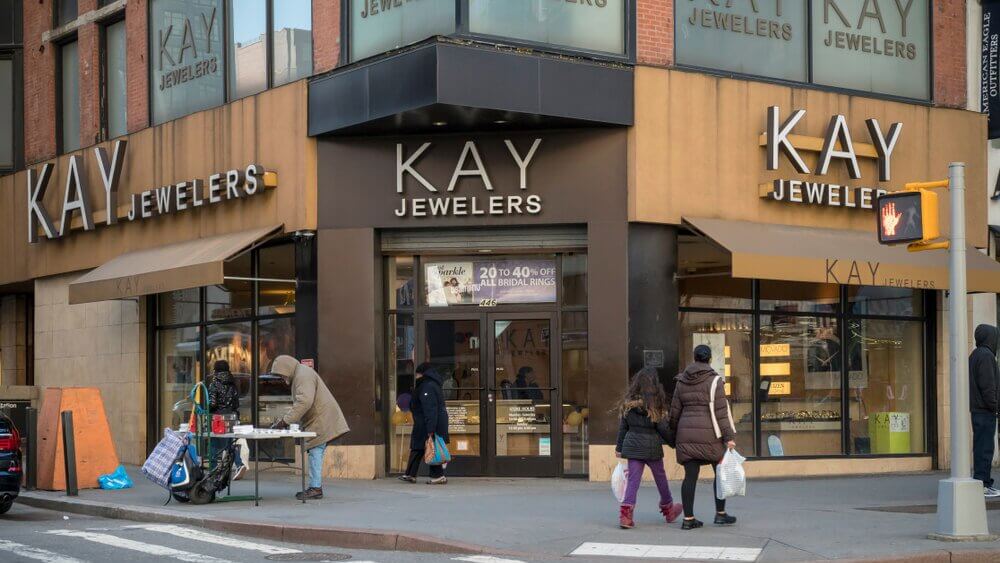1stDibs Jewelry & Engagement Rings Review 2025: The No-BS Guide
If you’re eyeing an engagement ring on 1stDibs Jewelry, treat it like a museum with price tags: curated dealers, rare eras, signed houses- and uneven listing quality. Verify GIA reports, zoom hard on prongs and fit, compare cross-listings, and use Make an Offer strategically. Great for connoisseurs; only if the paperwork and workmanship check out.

What Is 1stDibs? Platform & Positioning
Curated marketplace & vetted dealers
1stDibs is a curated luxury marketplace for jewelry, fine art, and design. Instead of open listings, dealers are vetted for expertise and inventory standards. That curation attracts signed houses and rare period pieces alongside contemporary builds. Pricing and descriptions are dealer-controlled, so selection is outstanding- but documentation depth and finishing quality vary by seller. Expect high-touch listings, professional photography, and the option to message dealers or Make an Offer on many pieces. For buyers, the model combines gallery-level stock with e-commerce convenience, ideal for unique engagement rings and collectible diamonds.
Watch-outs: Curation isn’t a guarantee of uniform standards. Scrutinize certificates, condition, and policies per listing.
Era/education content (Victorian, Edwardian, Art Deco)
1stDibs publishes accessible guides and videos on Victorian, Edwardian, and Art Deco aesthetics- useful when you’re pairing an engagement ring’s look with its period.
- Victorian (1837–1900): sentimental motifs (snakes, hearts, flowers), repoussé/chasing, early cluster/halo roots, rose/Old Mine cuts.
- Edwardian (1901–1910): platinum filigree, airy milgrain borders, delicate lattices, larger diamonds entering circulation.
- Art Deco (1915–1930s): geometric architecture, channel settings, color-block accents with onyx/ruby/sapphire; old European and emerald cuts shine.
These guides help decode hallmarks/stamps (maker, purity, place, date) and construction cues (e.g., channel walls, beadwork) that support authenticity.
Pro Tip: Antique cuts show broader flashes than modern brilliants. Decide whether you want period charm or maximum light return before filtering.
How 1stDibs Jewelry Works for Engagement Rings
Inventory scope & signed brands (Tiffany & Co., Cartier, Graff, etc.)
Inventory ranges from antique solitaires to modern showpieces across round, emerald, oval, cushion, radiant, pear, marquise, princess, and Asscher- plus Old Mine and Old European in antique rings. Signed pieces from Tiffany & Co., Cartier, Van Cleef & Arpels, David Webb, Graff, Tacori and others are common. Documentation often includes GIA for diamonds, while vintage/antique pieces may rely on appraisals and hallmark photos. In the upper tier (6–10 ct+), you’ll see platinum dominating, with yellow/rose gold trending for ovals/cushions.
Buyer’s Checklist: Ask for macro images of stamps, shanks, prongs, and side views- not just the face-up glamour shot.
Pricing mechanics: list price, Make an Offer, private offers
Most rings display a list price; many include “Make an Offer” or respond to private offers. Negotiation depends on spec rarity, brand signature, and market appetite. Some dealers cross-list identical inventory on their own sites or other marketplaces- pricing can differ. If you see a lower public price elsewhere, reference it in your offer.
Pro Tip: On non-unicorn inventory, realistic acceptance bands often sit in the single to low-double digits. Signed, scarce, or headline specs (e.g., D/IF, Type IIa) may allow little to no movement.
Review: 5★ (Alan from Austrialia) – GIA diamond ring with a flawless experience
Alan purchased a GIA-graded diamond ring from Antinori Fine Jewels via the platform and calls the craftsmanship and sparkle “exceptional,” with communication and shipping “within hours.” For readers, it’s a reminder that working with highly established dealers, especially on GIA-documented pieces, can deliver the premium, white-glove experience marketplaces aspire to provide.
Diamond Basics for 1stDibs Rings (4Cs decoded)
Cut: light return, proportion trade-offs
Cut governs brilliance, fire, and scintillation. For round brilliants, look for balanced table/depth, tight symmetry, and clean arrows; for fancy shapes, evaluate light leakage via crisp photos/videos. Antique cuts (Old Mine/Old European) trade some efficiency for chunky flashes and romance- choose deliberately.
Watch-outs: In three-stone rings, mismatched crown heights/angles between center and sides create dead zones.
Color: D–Z scale, near-colorless sweet spots
Diamonds grade D (colorless) → Z (light). Many buyers target G–H for near-colorless value; I–J can look excellent in yellow/rose gold. Elongated shapes reveal warmth differently than rounds- review face-up and profile views.
Clarity: eye-clean vs paper-clean
Prioritize eye-clean over “paper-clean.” SI1–VS2 is often the value sweet spot if inclusions are benign and off-table. Step cuts (emerald/Asscher) show everything; brilliants mask more. Vintage stones may show abrasion- magnified edge shots matter.
Carat & face-up size: mm measurements matter
Carat is weight; millimeter spread is what you see. Two 2.00 ct stones can face up differently if one is deep. Ovals/radiants usually look larger per carat than cushions/emeralds. Settings change perception: halos amplify size; heavy bezels/prongs can shrink it.
Fancy color & “Type IIa” claims: what they mean
For fancy color, insist on a lab report stating color grade and origin. Type IIa indicates exceptionally pure crystal (nitrogen-free) associated with pronounced transparency; it’s a material classification, not a performance guarantee. Treat it as a premium signal only with strong supporting specs.
Era & Style: Matching Aesthetic to You
Vintage vs. Modern: Solitaire, Halo, Three-Stone
- Solitaire: Timeless. Vintage solitaires may feature collet/buttercup settings; modern solitaires emphasize minimal metal and razor-thin prongs.
- Halo: Victorian roots; modern halos are micro-pavé and ultra-precise. Halos increase footprint visibly- great for carat-equivalent presence.
- Three-Stone: Period-correct in many eras. Modern builds use trapezoids, pears, bullets- ensure matching angles to avoid dark seams.
Pro Tip: Ask for top, side, and oblique photos; style coherence shows from every angle.
Art Deco geometry vs. Edwardian filigree
- Art Deco: Platinum or white gold, geometric symmetry, channel/box settings, calibré gems; check symmetry and channel integrity.
- Edwardian: Platinum filigree, feather-light metalwork, milgrain borders; inspect beadwork continuity and solder joints.
- Decision lens: Deco suits architectural minimalists; Edwardian fits lovers of lace-like metal and texture.
Watch-outs: In Deco rings, distorted channels or uneven calibré fit suggest heavy later repairs- price accordingly.
Settings & metals (platinum, yellow/rose gold)
- Platinum: Dense, hypoallergenic, keeps prongs crisp; micro-detail favorite for Deco/Edwardian.
- Yellow/Rose Gold: Warmer tone, flattering to I–J color; popular for modern ovals/cushions and vintage vibes.
- Two-tone: Platinum head + gold shank blends security with color harmony.
Buyer’s Checklist: Confirm metal purity stamps match the listing and the era (e.g., platinum filigree shouldn’t hide a base metal core).
Authenticity, Certification & Appraisals
GIA vs. IGI vs. in-house appraisals
- GIA (Gemological Institute of America): The reference lab for color, clarity, cut consistency and fancy-color determinations. Most high-value 1stDibs diamond rings cite GIA.
- IGI/others: Common in retail; grading may differ slightly in stringency, which can influence price perception.
- In-house appraisals: Useful for insurance value and measurements but not equivalent to an independent grading report for diamond quality.
Certificates at a glance
| Document type | Primary use | Strength | Limitation |
| GIA grading report | Diamond quality | Market standard; consistent | Does not appraise value |
| IGI grading report | Diamond quality | Widely available | Perceived variance vs. GIA |
| In-house appraisal | Insurance/replacement | Ring-level details, photos | Not independent grading |
Pro Tip: For antique diamonds without GIA, weigh hallmarks + construction + seller reputation- and price in the uncertainty.
Reading certificates: fluorescence, proportions, comments
- Fluorescence: Medium–strong blue can slightly soften face-up warmth in near-colorless stones; in rare cases it causes haze- ask for daylight photos.
- Proportions: For rounds, table/depth/symmetry/polish drive light return. For fancies, review length-to-width and crown/pavilion angles where available.
- Comments: Chips, naturals, extra facets, or clouds not shown can matter; get macro photos to correlate comments with reality.
Look for a well know seller on 1stdibs
On 1stDibs, search the seller’s name and open their Creator profile, view how many items the seller presents, then verify badges, ratings, years active, response rate, number of sold listings, and clear return/certification details.
Based on the listing dataset and marketplace visibility, EMD Diamonds appears among the most visible engagement-ring sellers on 1stDibs, offering a deep, rotating, New York–made inventory backed by nearly 40 years of trade experience. Their U.S. production emphasizes ethical sourcing and GIA grading options.
Evaluate any seller- EMD included- by:
- Documentation rate: How often listings include GIA with clear report numbers.
- Breadth vs. depth: Range of shapes/sizes versus standout spec density (e.g., many 3–5 ct centers).
- Responsiveness: Quality of additional photos/videos, specific answers to prong/fit/resize questions, and offer handling.
Watch-outs: “Largest” is a marketing claim unless 1stDibs releases league tables. Rely on listing-level evidence.
Spotting red flags in listings
- Prong anomalies: Uneven re-tips, porous solder, or rhodium bleed onto yellow gold signal rushed bench work.
- Stone fit: Gaps between stone and collet, or a center pushed off-axis, indicate non-bespoke mounts or later swaps.
- Vague paperwork: “Certificate on request” with no lab named; missing treatment disclosures on rubies/sapphires in multi-stone rings.
Buyer’s Checklist: Ask for sharp, unedited macros of stamps, under-gallery, and prongs- then compare to the cert and era claims.
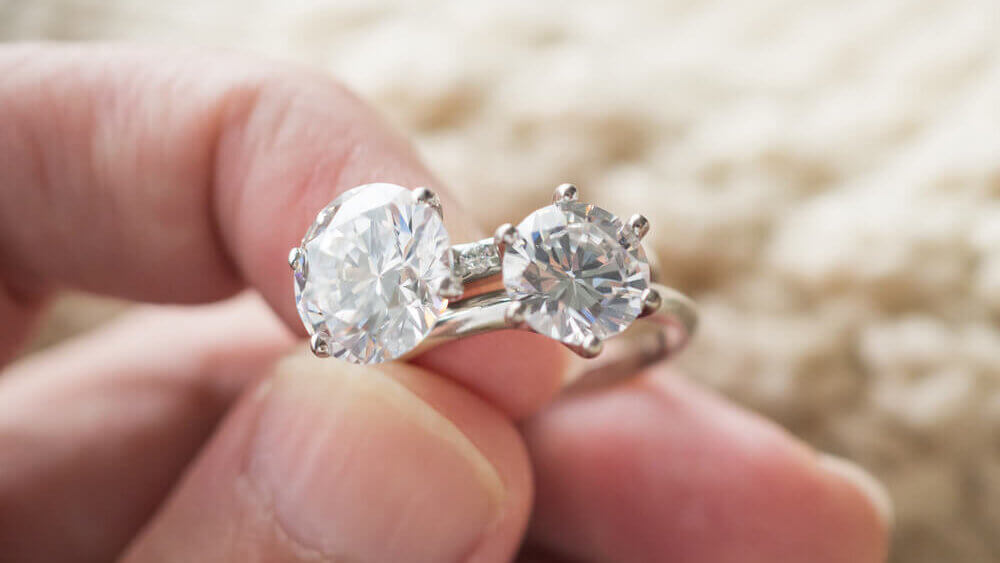
Pricing Reality Check & Negotiation Tactics
Interesting 1stDibs deals span every budget. Editorial highlights included Art Deco–style trapeze earrings with turquoise, onyx, rubies, and diamonds for around $700, and an 8-carat emerald-cut aquamarine ring near $2,960.
In the mid-range, buyers saw sculptural emerald-and-diamond floral earrings at $12,974, and a modern chain diamond bracelet that dropped roughly 20%, from $21,067 to about $16,854.
Signed pieces pushed higher. A David Webb rock-crystal & diamond bracelet was listed at $53,000, while a 1970s Van Cleef & Arpels chrysoprase & diamond bracelet reached $13,800.
At the ultra-high end, a 9.43-carat D–VS1 round diamond ring with tapered baguettes carried an asking price close to $914,000, with several 10-carat+ rings observed in the $400k–$880k range.
Important caveat: identical pieces sometimes appeared at different prices across platforms. Many buyers reported securing stronger net pricing on 1stDibs by using “Make an Offer” or negotiating private deals, a reminder that list price is only a starting point.
Review: 1★ (Diana from the US) – “Advertised as 14K with excellent craftsmanship, received a dull, unfinished piece”
Diana reports buying a ring marketed as 14K with “excellent craftsmanship,” but receiving one with no visible hallmark, a dull finish, and sharp prongs. Because she reported the issue outside the 7-day window, delayed by shipping, she says support declined to assist and asked her to fund third-party lab verification. Her case underscores two buyer controls: verify metal stamps and finish quality on arrival, and document any mismatch immediately (within the stated policy window).
How 1stDibs pricing compares to retail & auctions
1stDibs often lists gallery-grade inventory alongside signed pieces, so asking prices may exceed chain retail for comparable carat but not comparable provenance. Versus auctions, 1stDibs trades the hammer-fee lottery for buy-it-now certainty and returns (seller-dependent). Buyers sometimes find identical items cheaper on a dealer’s site or another marketplace. Always check cross-listings before bidding or making an offer.
Recent results underscore the platform’s wide spread. In 2023, a 5.00-carat internally flawless diamond engagement ring in white gold reportedly closed at ~$350,000. In 2024, a 7.00-carat diamond ring was reported at $1,000,000. The sales mix also mirrors 1stDibs’ US-centric buyer base (≈84–86%) and strong dealer hubs in the USA/UK/Italy noted in the shared data. As ever, final realized prices hinge on condition, documentation (GIA preferred) and negotiation, with many deals improved via “Make an Offer” or private offers.
Pro Tip: For antique rings, price isn’t just carat math- it’s workmanship + rarity + condition. A textbook Deco channel ring can outrun a bigger modern halo.
When to “Make an Offer” (and how much)
Use “Make an Offer” when the piece is not a unicorn (e.g., D/IF Type IIa, signed masterpiece) and you’ve verified comps.
- Common spec tiers: Offers in the single to low-double digits can be realistic.
- Signed/rare: Expect 0–5% movement, if any.
- Cross-listing leverage: If you found a public lower price, reference it with the URL and ask the dealer to meet or beat.
Watch-outs: A deep discount with no cert isn’t a win; it’s a risk. Don’t overpay a discount- over-focus on percent off and forget absolute value.
Hidden costs: tax, customs, shipping, resizing
Budget beyond the price:
- Tax/VAT & duties: Cross-border purchases can add import VAT/duties- confirm who pays what.
- Insured shipping: Require fully insured parcel post or courier with responsibility until delivery.
- Sizing & service: Resizing, re-rhodium, or re-tip work adds cost; if you size before inspecting, you may void returns.
Buying Workflow on 1stDibs
Search filters & saved searches
Start with filters for era, metal, shape, carat range, price, seller location. Save searches for newly listed items; this matters for period rings and signed pieces that move quickly. Consider two parallel streams:
- Spec-first: You want 2.00–2.50 ct oval, G–H, eye-clean.
- Aesthetic-first: You want Deco channel with calibré stones and platinum architecture.
Pro Tip: Filter by GIA present when precision matters; widen for antique cuts but increase your documentation asks.
Messaging sellers (what to ask)
Your first message should be surgical:
- Docs: “Please share the GIA report number and macro shots of stamps and prongs.”
- Condition: “Any re-tips, replaced shank, or prior resizing? Side-stone chips?”
- Fit: “Exact mm of the center; face-up mm; ring size; resize limits?”
- Returns: “Days to return? Restocking? Does sizing void eligibility?”
Buyer’s Checklist: Request daylight video and a neutral-light still. Ask for top, side, and under-gallery angles.
Payments, escrow, returns, and buyer protection
Transact through 1stDibs to keep platform protections intact. Pay with a major credit card (directly or via PayPal) to layer issuer dispute rights. Confirm return windows and whether alterations void returns. Require insured shipping and clarity on international duties. If a listing’s policies feel rigid for the risk, walk.
Review: 1★ (Boris from Austrilia) – “Fake wedding ring, late delivery, no help”
Boris claims the ring he ordered as a wedding band arrived weeks late and “looked nothing like the listing,” describing thin, possibly plated metal, visible welds, and mismatched proportions. He says the delay and disappointment derailed the wedding plans and that support “ran the same script” without resolving the dispute. The takeaway for readers: presentation can be immaculate online, but workmanship (prongs, metal gauge, finish) is the truth test, zoom in, ask for macro photos, and confirm hallmarks before paying.
Pros & Cons: Is 1stDibs Right for You?
Who should buy on 1stDibs
Collectors and design-driven buyers who value era-correct craftsmanship, signed provenance, and the ability to compare global stock will feel at home. If you’re comfortable verifying certs, hallmarks, and condition, and you’ll use Make an Offer intelligently, 1stDibs can be the fastest path to unique engagement rings.
Review: 5★ (Annegrethe from the US) – Repeat buyer, consistent quality and protection when I need it
Annegrethe notes multiple successful purchases over the years and highlights one instance where communications faltered; she says she still “had all my money refunded,” describing the site as a “trusted and effective” venue for high-quality pieces. The consumer lesson: strong sellers and clear documentation help, and buyer protection processes can work when evidence is organized and submitted promptly.
When to look elsewhere
If you need hand-holding on specs, want factory warranty and brand sizing on day one, or your budget favors lab-grown bargains, local boutiques and brand stores may fit better. If a listing lacks clear documentation, or the setting reveals bench shortcuts, you’re paying for risk- look elsewhere.
Alternatives & Complements
Auction houses, dealers, and local boutiques
Auctions are great for rare period pieces; preview in person if possible and factor buyer’s premium. Boutique estate dealers offer curated authenticity with face-to-face viewing. Local jewelers can provide custom builds and after-sale service- especially useful for sizing/maintenance plans.
Marketplaces vs. brand boutiques
Marketplaces like 1stDibs excel in variety and rarity. Brand boutiques deliver uniform warranties, service networks, and serialized documentation- but fewer one-off treasures. Many buyers mix: find a vintage center on a marketplace, then commission a new mounting locally.
Practical Checklist & Next Steps
Pre-purchase checklist
- GIA report (or solid antique dossier) and matching measurements
- Macro photos: stamps, prongs, under-gallery, side view
- Face-up mm and length-to-width (for fancies)
- Resize limits and current ring size
- Return window, restock rules, and whether alterations void returns
- Insured, trackable shipping and duty/tax clarity
- Cross-listing price check to calibrate your Offer
Post-purchase care & insurance
- Independent insurance appraisal (even with GIA)
- Add ring to your jewelry insurance; confirm coverage for travel and mysterious disappearance
- Schedule first check-up (prongs, pavé) after 6–12 months
- Store documents and photos together; keep a cleaning protocol for your metal and setting type
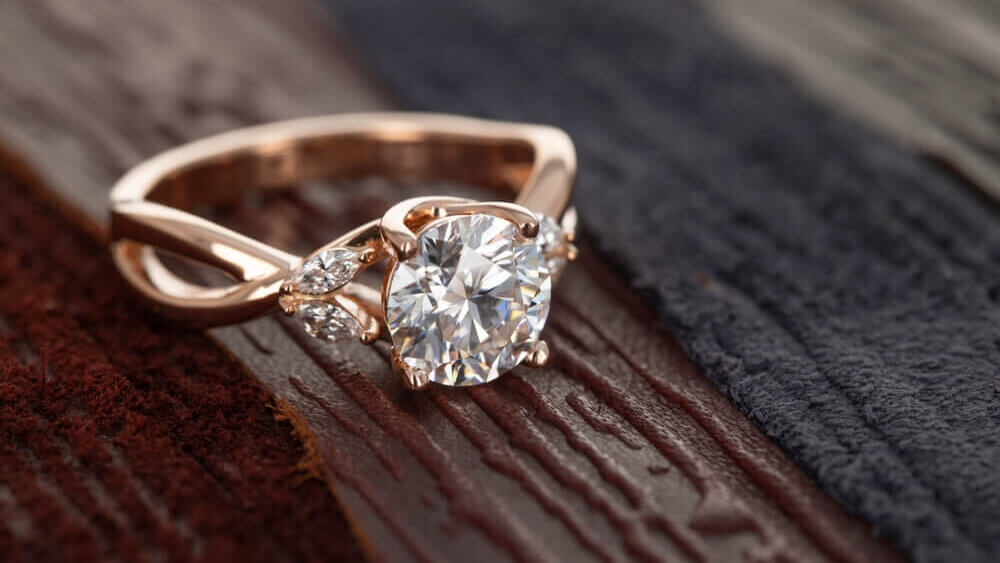
Smart Buying Checklist for 1stDibs Jewelry (Diamond Engagement Rings)
1) Match the Paperwork to the Listing
Request a clear lab report (GIA preferred) and make sure report number, shape, carat, color/clarity, measurements, fluorescence, and proportions precisely match the listing. For colored diamonds, verify “natural color origin.” For antique stones without reports, ask for full specs and any independent documentation.
2) Zoom Hard on Photos & Video
Open every image at max zoom. Look for re-tipped or uneven prongs, rhodium “bleed” onto yellow gold, thin/worn shanks, bent galleries, chips/abrasions on girdles, and stones that don’t seat cleanly in the setting. Ask for daylight and hand-shot videos- not just lightbox glam.
3) Treat the Description Like a Contract
Confirm: metal and karat, exact ring size, era/period, maker, hallmarks, serials, total carat weight (center vs side stones broken out), and what’s included (box/papers). Note any past resizing or “restorations.”
4) Vet the Seller- On-Platform
Read ratings, response time, and return terms on the 1stDibs seller profile. Keep all Q\&A inside 1stDibs messaging to preserve a paper trail and platform protections.
5) Cross-Check Pricing & Use Offers
Many dealers cross-list inventory. Search the exact title/images across the web and the dealer’s site. Use “Make an Offer” or ask for a private offer; realistic counters often land 5–15% off depending on demand, but never assume.
6) Verify Signatures & Hallmarks
For signed houses (Tiffany, Cartier, VCA, Graff, etc.), ask for sharp macro shots of hallmarks and serials. Check font, placement, and period correctness. Over-polishing can soften stamps- flag it.
7) Antique Reality Check (“Trigger’s Broom”)
Period rings may have replaced shanks, re-tipped prongs, or swapped collets over decades. That’s normal- just ensure the work is sound, the aesthetics remain era-true, and the stone sits secure with symmetrical claws.
8) Sizing & After-Sale Rules
Confirm current size and safe sizing range (pavé/eternity/platinum can be tricky). Get in writing whether sizing/engraving voids returns, who performs the work, timeline, and costs.
9) Shipping, Insurance & Customs
Insist on fully insured, trackable shipping with clear loss liability until delivery. If buying from abroad, calculate VAT/duties and any restrictions (e.g., organic materials). Ask for the declared value and carrier before paying.
10) Returns, Holds & Time Windows
Know the exact return window, restocking fees, and whether “approval” or short holds are allowed. Confirm the condition required for returns and whether tamper tags or documentation must be intact.
11) Payment & Protection (Stay On 1stDibs)
Pay through 1stDibs with a major credit card; decline off-platform payment requests. Confirm what happens if an item is “significantly not as described” and how refunds are processed within the platform’s policies.
FAQs
1. What is 1stDibs and how does “1stdibs jewelry” work?
1stDibs is a curated marketplace where vetted dealers list fine jewelry; you browse, message sellers, make offers, and buy through the platform.
2. Is 1stDibs legit? (“1stdibs review”)
Yes- it’s a long-running platform with dealer vetting and on-platform payment/communication. Still, evaluate each seller’s ratings, policies, and documentation.
3. Are “1stdibs rings” new or vintage?
Both. You’ll find antique, vintage, estate, and contemporary designer rings; use filters for period, metal, maker, and price.
4. How do I verify a “1stdibs diamond ring”?
Ask for a GIA report, magnified photos/video, and macro shots of hallmarks/serials if it’s a signed brand (e.g., Cartier, Tiffany).
5. Can you negotiate on 1stDibs jewelry?
Often, yes. Use “Make an Offer” or ask for a private offer; fair counters are common on cross-listed pieces.
6. What returns do sellers offer? (“1stdibs review” concern)
Return windows and restocking fees vary by seller/category. Read the listing and seller page carefully before purchase.
7. How does sizing work for a “1stdibs ring”?
Confirm current size, allowable sizing range, and whether sizing/engraving affects return eligibility- get it in writing.
8. Are “1stdibs engagement rings” a good value?
They can be- especially rare periods, signed pieces, or unique cuts. Cross-check comps and factor condition, paperwork, and brand.
9. What should I look for in listing photos/video of a diamond ring?
Even prongs, secure seating, clean gallery, unworn shank, no chips/abrasions, and true-to-life daylight videos (not only lightbox).
10. How do payments and protection work?
Pay on 1stDibs with a major credit card to keep platform protections. Avoid off-platform requests.
11. What about shipping, insurance, and duties?
Insist on insured, trackable shipping; clarify who holds loss liability until delivery. International buyers should budget VAT/duties.
12. Do sellers provide appraisals on “1stdibs diamond rings”?
Some include appraisals; for modern diamonds prioritize GIA reports. For antiques, request full specs and any lab or expert documents.
13. How can I avoid overpaying on 1stDibs jewelry?
Reverse-image/title search to find cross-listings, compare dealer sites, check recent sold comps, and use offers strategically.
14. Are there trustworthy “1stdibs reviews” to read?
Yes- seller profiles show ratings and buyer feedback. Focus on volume of sales, responsiveness, photo accuracy, and return experiences.
15. What red flags should I watch for on “1stdibs engagement rings”?
Vague specs, no lab report for modern diamonds, soft/blurred hallmarks, heavy retipping with sloppy finish, and restrictive/no returns.
Sources
- Gemological Institute of America (GIA) – 4Cs and fluorescence fundamentals: https://4cs.gia.edu/en-us/diamond-4cs/
- FTC Jewelry Guides – labeling and disclosure standards: https://www.ftc.gov/business-guidance/resources/jewelry-guides
- JCK: “Key Takeaways From 1stDibs’ First Jewelry Report” (2024) – trends, brand insights: https://www.jckonline.com/editorial-article/1stdibs-first-jewelry-report/
- Wikipedia: “1stDibs.com, Inc.” – company overview and history: https://en.wikipedia.org/wiki/1stDibs.com
- 1stDibs YouTube era videos (Victorian/Edwardian/Art Deco) – style identifiers and hallmarks: https://www.youtube.com/user/1stdibs
- CNBC: “The RealReal’s authentication scrutiny” – context for competitors: https://www.cnbc.com/video/2019/11/05/a-look-into-the-real-reals-authentication-process.html
Note:
The insights provided in this review are drawn from publicly available data, customer reviews, and expert analysis. Our goal is to offer a balanced perspective to help buyers make informed decisions.
This site is not affiliated with or endorsed by 1stDibs. All information is based on publicly available data and independent evaluations. Logos and trademarks belong to their respective owners and are used for informational purposes only.
Readers are encouraged to verify all details with the retailer directly before making a purchase



